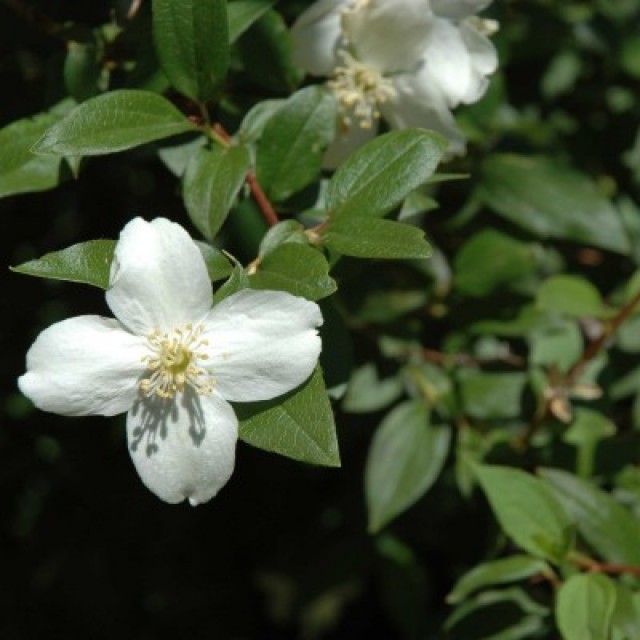COMMON NAME
Lewis' mock orange
SCIENTIFIC NAME
Philadelphus lewisii
ALSO KNOWN AS
Western mock orange, Wild mock orange
Plant family
Hydrangea (Hydrangeaceae)
Plant group
Deciduous Trees and Shrubs
Lewis' mock orange is a small deciduous shrub with opposite, pointed leaves, clusters of white flowers that smell like orange blossoms, and woody capsules for fruits that split into 4 open valves when ripe.
152 reports
30+
OBSERVERS
152+
OBSERVATIONS
Identification hints
Lewis' mock orange is a small deciduous shrub with opposite, pointed leaves, clusters of white flowers that smell like orange blossoms, and woody capsules for fruits that split into 4 open valves when ripe.
Did you know?
The genus name comes from the Egyptian king Ptolemy Philadelphus (309-247 BC), and the species name honors Meriwether Lewis, who first described the shrub along the Bitterroot River. It is a very popular ornamental shrub in temperate climates due to its intense sweet fragrance that is similar to orange trees. Poulticed or powdered leaves have been used for medicinal or culinary purposes, while the wood has been used for snowshoes and tools/weapons.
DISTRIBUTION IN TH U.S.
California
,
Idaho
,
Montana
,
Oregon
,
Washington
HABITAT
This plant likes full sun to part shade, well-drained areas, particularly along streams and in rocky slopes and open banks. It is often found in moist or rocky slopes, ravines, grasslands, thickets and open woodlands, generally at 7000 ft (2100 m). Oak or pine woodland.
ATTRIBUTES
Leaves
Leaf arrangement is opposite, leaf shape is generally oval-shaped and 0.79 to 3.15 in (2 to 8 cm) long by 0.79 to 1.57 in (2 to 4 cm) wide, glabrous (smooth) to hairy. Each leaf bears three main veins from the base, leaf edges range from smooth to toothed.
Flowers
Flowers can appear in clusters of 3 to 11 at tips of branches. Generally 0.79 to 1.18 in (2 to 3 cm) wide with 4 to 5 white-ivory, round or notched petals and 4 to 5 sepals (petal-like structures). Flower centers contain 25 to 40 yellow stamens. Fragrance similar to orange blossoms. Flowers bloom May to July.
Fruits
Lewis’ mock orange has fruits that are capsules. The capsules are small and hard, with woody pointed wings and are about 1 cm long.
Bark
Red-brown, aging gray, peeling as narrow strips or narrow rectangles; twigs glabrous (smooth) to hairy.
See Menu
- 2021 Chicago Botanic Garden. All Rights Reserved.
-
Creative Commons
BY-NC-SA 4.0 - Terms of Use
- Privacy Policy
- Data Sharing and Citation Policies
- 2021 Chicago Botanic Garden. All Rights Reserved.



